

Its sunny here in Senglea and its been much warmer back home!
We arrived in Malta for our 'annual' visit to The George Cross Island this afternoon (Friday 15th May) and the weather here is 'blue skies' and temperatures of +27C.
Before packing my bags (in truth my wife does most of it!) I attended the Annual BIFGA Spring Farm Walk; held this year at Northiam Farm, Horsmonden thanks to Mike and George Chambers. Regular English Apple Man readers will be familiar with Northiam Farm as the Chambers family have been very successful in Orchard Competitions.
This farm was the winner of the 2012 Goudhurst and Paddock Wood Orchard Competition:
Click on Goudhurst and Paddock Wood 2012 to view
NOTE: for those who are accessing the Journal via a Mobile or iPad some of the pictures are at 45 degrees - this is due to a 'glitch' with the software (not my usual source) I used to edit pictures - NOT because I drank to much wine last night (although I probably did!
Northiam Farm is a particularly attractive farm which was bought by Mike Chambers father in 1929; the picture below shows Mike posing next to the original sale particulars; plus a tray of his own Honey on offer to anyone attending this most enjoyable evening; The English Apple Man purchased a couple of pots for 'honey and toast' breakfasts!
Mike and his son George are very good farmers; their husbandry is excellent and added to the scenic quality of the farm any visit to Northiam Farm is one to be cherished.
Below; Mike Chambers
Below left; The sale particulars held The Swan Hotel in Tunbridge Wells on Friday 20th December 1929 and Below right; Mike's Dad cultivating an orchard - this was common practice in those days and I well remember in my youth my Father always cultivated a young orchard in its early years; in fact if I remember rightly, a large dollop of Farm Yard Manure went around the tree and cultivation stopped competing weed growth; 'no weedkillers in those days!
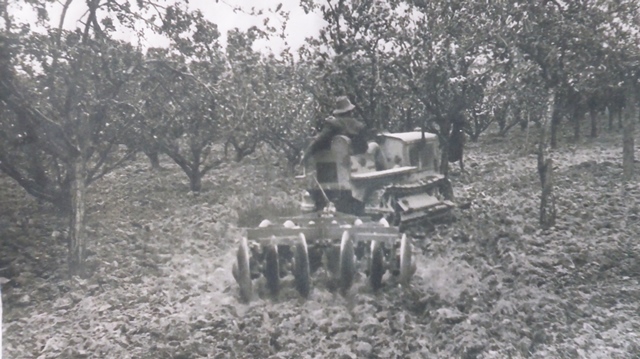
Below; the land area of 75 acres for sale in 1929 with its Ordanance numbers and crops planted.
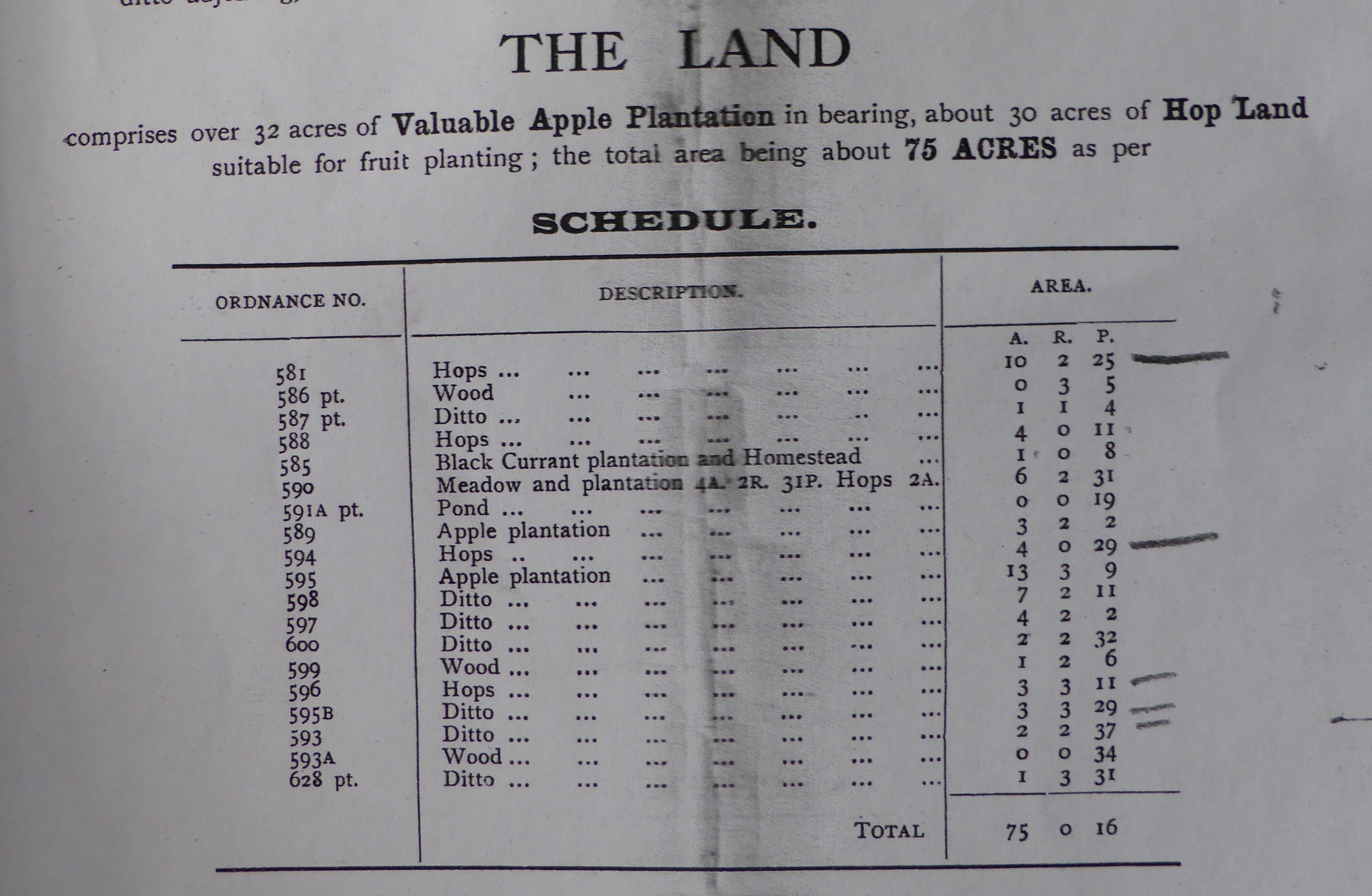
Below left; In this orchard, George Chambers told us he had decided to increasing potential yield by taking the leader higher; adding a top wire and a cane to each tree provided the necessary support for an increased fruiting area. Initially he intended to nail the cane to the tree stake, but then decided to use plastic tree ties.
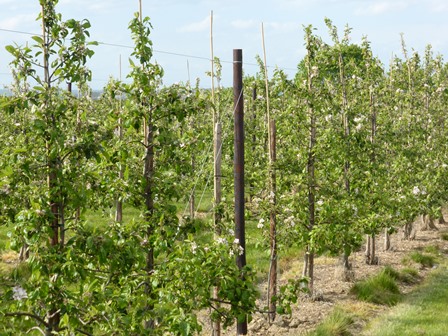
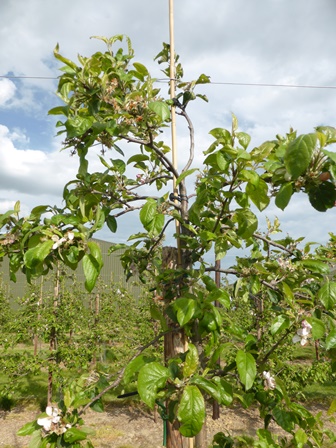
Below left; These Bramley trees still carried some blossom; Below right; George Chambers informing BIFGA members about the different varieties grown at Northiam Farm.
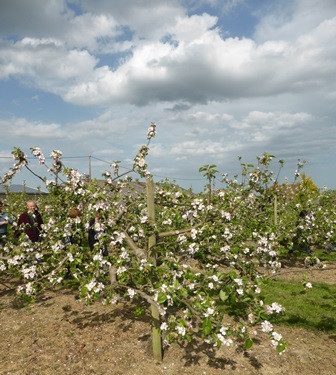
Below; Around 90 BIFGA members enjoyed the walk around Northiam Farm with George Chambers
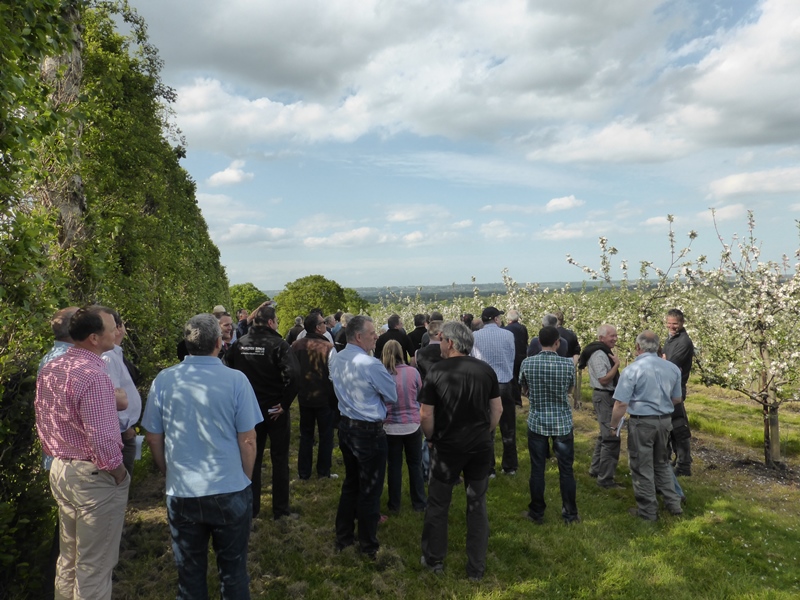
Below; a self fertile Cox orchard at Northiam Farm
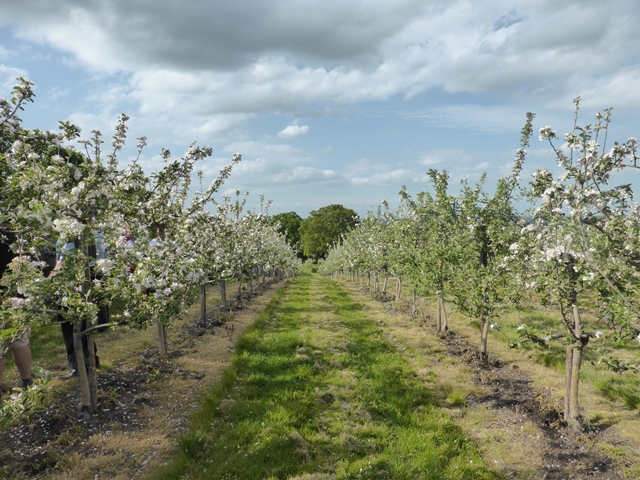
Below left; Gala Galaxie - Below right; in this young orchard George has planted Red Love among the Royal Beaut. Red Love is a red fleshed apple developed in Switzerland
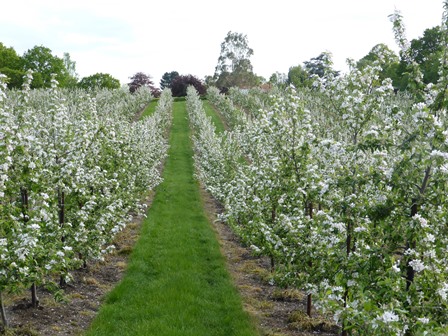
Below left; Pear fruitlets forming - Below right; Cox fruitlets
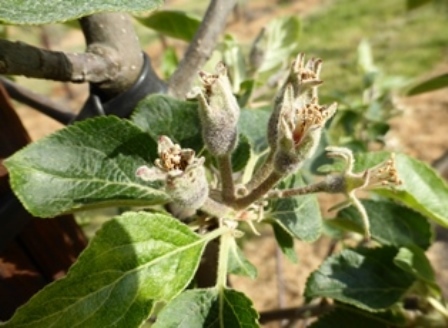
One of 'the' spectacular sights at this time of the year, is Malus (Crab) apples in full bloom - Below right; George told visitors there are many ponds at Northiam Farm; all contribute to biodiversity encouraging plant and animal life.
Following the farm walk, a presentation by Simon Fitch and Len Manning from The evening's sponsors - ICA Group; Simn gave an overview of the ICA Group activities before Len brought BIFGA members up to date with SAFEPOD the ICA version of Dynamic CA Storage which is being trialed at A.C.Goatham's Flanders Farm and the Produec Quality Centre at East Malling Research.
Below left; Simon Fitch - Below right Len Manning
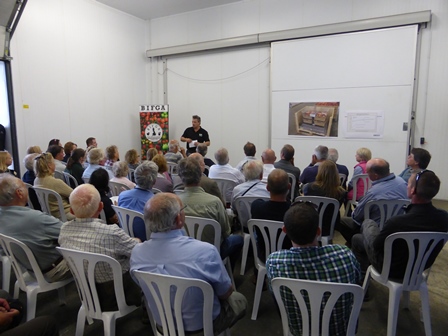
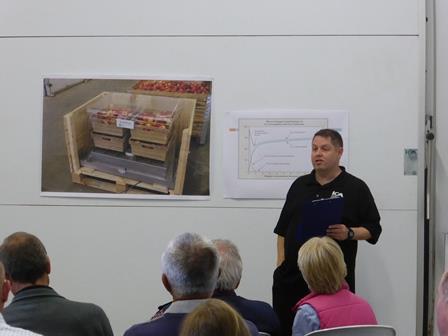
450 years ago in 1565 the Ottaman Turks laid seige to Malta in an attempt to remove The Knights of St.John from their Malta base. Repelled by The Knights who defended the Three Cities - Isla (English name - Senglea) Birgu (English name - Vittorioso) and Cospicua - Now all is peaceful between Turkey and Malta and to commemorate the 450th anniversary a Turkish Warship is berthed on The Waterfront at Valletta.
Below; a Turkish Warship
In 1565..........
The Knights knew they were vulnerable in Malta despite the harbours and their two forts, St. Angelo, in what is now Vittoriosa, and newly-built St. Elmo, on the open peninsula of Mount Sciberras overlooking the harbours (later known as Grand Harbour and Marsamxett Harbour).
Grand Master La Valette had done his best to build defences and had requested extra forces from the Emperor Charles V, the Pope and the Viceroy of Sicily.
But no help came. In May, 1565, a vast Ottoman fleet, some 40,000 men, lay siege to the Islands. The Knights were heavily outnumbered with a mere 700 or so men and around 8000 Maltese regular troops. The Islanders took refuge in the fortified towns of Mdina and Birgu (Vittoriosa) destroying crops and poisoning wells as they fled.
The Ottomans first decided to attack isolated Fort St. Elmo, on the Sceberras peninsula, because of its commanding position between the two harbours. Repeated assaults were launched over 36 days, but the small garrison of Knights held on to the fort for far longer than Suleiman's men anticipated. After four weeks, they finally overran St. Elmo but at a heavy price: the loss of 8000 men. The Turkish commander Dragut was fatally injured during the taking of St. Elmo. Under his co-commander, Mustafa Pasha, the Ottoman troops now had St. Angelo in their sights.
It is the battle for St. Angelo which saw some of the bloodiest episodes of this Holy War. It was to the basis of legends for centuries to come. Mustafa Pasha was to launch some 10 attacks on the walls of St. Angelo and the fortified Three Cities throughout the long, hot summer of 1565. Even on 18th August, when a huge part of the defences were breached, the Ottomans failed to take the Fort. Vallette himself had even entered the battle fray and despite the uneven odds for success, he had refused to accept the Ottoman's terms of surrender.
At one point in the battle, the Ottomans floated the headless corpses of captured Knights across Grand Harbour. The act was returned in kind: Vallette ordered all Ottoman prisoners to be executed and their heads used as 'cannon balls' to fire back toward their compatriots in St Elmo.
By September, the Ottomans were concerned about having to remain in Malta during the winter, and their morale began to ebb. At this point, Vallette's long-awaited relief forces appeared at Mellieha; a Bay and took control of high ground inland. Almost trapped, the Ottoman troops retreated, but not before losing thousands more men.
The Great Siege ended on 8th September, commemorated today with a public holiday, il-Vitorja. The epilogue to the Siege was twofold: the Knights of St. John in Malta had seriously diminished the power of the Ottomans. And Malta's magnificent capital, Valletta, was founded by and named after Grand Master Jean de la Valette. Valletta was to be not only a fortress city, but the cultural home to some of the finest works of 16th - 18th century Europe. Vallette himself was buried in the city some three years later.
It is now approaching 11am here (10am in the UK) on Saturday morning and that is all for this week........
More next week...
Take care
The English Apple Man - in Malta